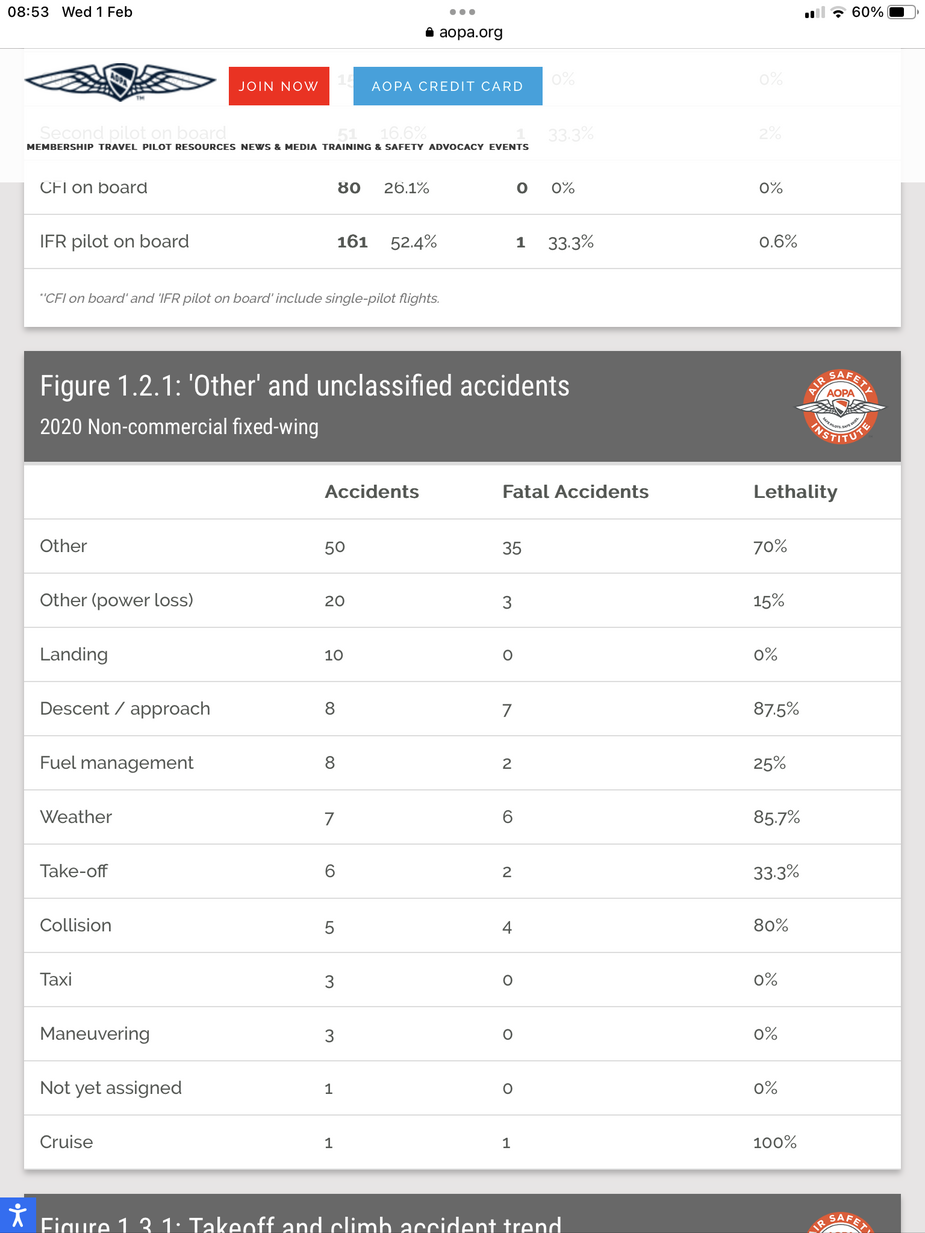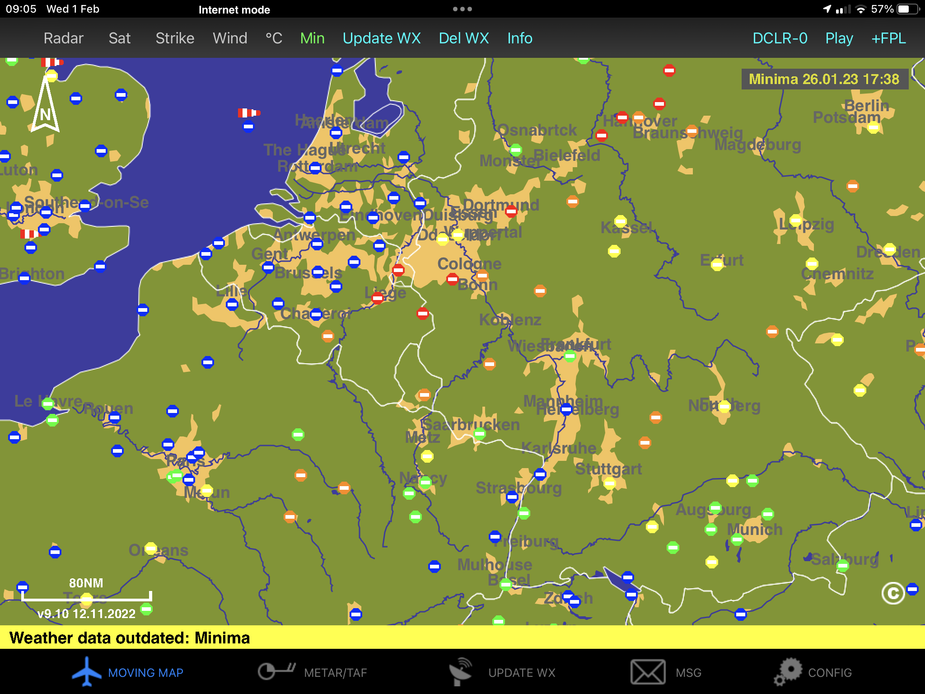Fixed some months ago. The error was too much water, way too much.
The pics in post 08 look possible if you have the nerve and skill of the girl in the Italian mountain forced landing thread. Up steep slope.
Well that’s one way to look at it.
The pics in post 08 look possible
I would say “not impossible” 
Good thinking, but how much effort are we devoting to matters which do not kill people? People who die in GA aircraft are rarely due to engine failure in cruise…
From the 2020 Nall report, thins one would fall into “others”

And if you really want to split hairs, you can find this one within “others”

Although the split is not very clear, it does give an idea of the magnitude of the problem being discussed.
My approach would be to treat it at my personal risk management level. Would I fly IFR SEP over a widespread area of low ceilings? Day or night? Solo or with pax? Wx around it? On a freshly OHd engine or aircraft fresh out of maintenance? Low on fuel? IMC/ VMC on top? Icing layers? …
As a community it might not make sense to worry about it, as an individual and hence a sample of one, you should :-)
The key is to think if you can mitigate it. Having a good maintenance shop you trust, but verify their work, and not skimping on preventive items, might be considered
I find the “min” ADL picture particularly useful for that. One may also treat cold/rough bodies of water or terrain similarly.

My approach would be to treat it at my personal risk management level. Would I fly IFR SEP over a widespread area of low ceilings? Day or night? Solo or with pax? Wx around it? On a freshly OHd engine or aircraft fresh out of maintenance? Low on fuel? IMC/ VMC on top? Icing layers? …
You don’t have to mitigate everything, you can simply reduce exposure fly less NVFR or LIFR and accept whatever residual risks you have there
One thing, I tend to avoid is take-off in NVFR or LIFR with “unknown aircraft state and less currecy”, I prefer to depart in good conditions, get things checked then maybe continue into night or hard instrument conditions, if not I just accept the uncontrolled risks that things can go tits up for me on that flight and spend more time on things that I can control like airspeeds and bank angles…
denopa wrote:
The key is to think if you can mitigate it.
Exactly. My approach would be to do it in a proportionate manner. I am a firm believer in the 20/80 management approach.
Antonio wrote:
I am a firm believer in the 20/80 management approach.
Funny how the 20/80 rule seems to be a universal recipe for just about anything  It certainly works, the problem is it can be applied over and over, and in most cases already is applied in some form before you have done anything. EASA regulations for instance.
It certainly works, the problem is it can be applied over and over, and in most cases already is applied in some form before you have done anything. EASA regulations for instance.
The typical engineering saying is to identify the 20% of actions that will lead to 80% improvement. The key word is identify. How do you do that? The result is often the 20% low hanging fruits that leads to some improvement.
Anyway. The new UL regs in Norway will allow NVFR and VFR on top. The requirement is BRS. Why this requirement? Is it because Rotax engines have a habit of stopping for no reason? or is it because we often fly over terrains looking like the above? I think it’s neither. The reason is that most ULs already have BRS. It’s a low hanging fruit, which by coincident in this circumstance is likely to mitigate the risk (of fatality) almost 100%. It’s more of a 1/99 rule  closer to 0/100.
closer to 0/100.